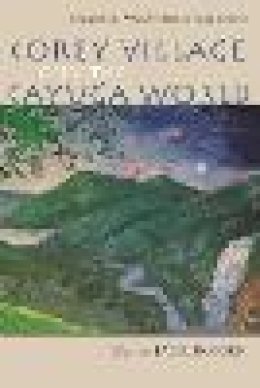
Stock image for illustration purposes only - book cover, edition or condition may vary.
Corey Village and the Cayuga World: Implications from Archaeology and Beyond (The Iroquois and Their Neighbors)
€ 55.03
FREE Delivery in Ireland
Description for Corey Village and the Cayuga World: Implications from Archaeology and Beyond (The Iroquois and Their Neighbors)
Hardcover. Editor(s): Rossen, Jack. Series: The Iroquois and Their Neighbors. Num Pages: 288 pages. BIC Classification: 1KBBEY; 3JB; HBJK; HBTB; HDD; JFSL9. Category: (G) General (US: Trade). Dimension: 229 x 152 x 20. Weight in Grams: 485.
The Cayuga are one of the original five nations of the Haudenosaunee Confederacy, a powerful alliance of Native American tribes in the Northeast, inhabiting much of the land in what is now central New York State. When their nation was destroyed in the Sullivan–Clinton campaign of 1779, the Cayuga endured 200 years of displacement. As a result, relatively little is known about the location, organization, or ambience of their ancestral villages. Perched on a triangular finger of land against steep cliffs, the sixteenth-century village of Corey represents a rare source of knowledge about the Cayuga past, transforming our understanding of how this nation lived.
In Corey Village and the Cayuga World, Rossen collects data from archaeological investigations of the Corey site, including artifacts that are often neglected, such as nonprojectile lithics and ground stone. In contrast with the conventional narrative of a population in constant warfare, analysis of the site’s structure and materials suggests a peaceful landscape, including undefended settlements, free movement of people, and systematic trade and circulation of goods. These findings lead to a broad summary of Cayuga archaeological research, shedding new light on the age of the Haudenosaunee Confederacy and the role of the Cayuga in the American Revolution. Beyond the comprehensive analysis of artifacts, the Corey site excavation is significant for its commitment to the practice of ""indigenous archaeology,"" in which Native wisdom, oral history, collaboration, and participation are integral to the research.
In Corey Village and the Cayuga World, Rossen collects data from archaeological investigations of the Corey site, including artifacts that are often neglected, such as nonprojectile lithics and ground stone. In contrast with the conventional narrative of a population in constant warfare, analysis of the site’s structure and materials suggests a peaceful landscape, including undefended settlements, free movement of people, and systematic trade and circulation of goods. These findings lead to a broad summary of Cayuga archaeological research, shedding new light on the age of the Haudenosaunee Confederacy and the role of the Cayuga in the American Revolution. Beyond the comprehensive analysis of artifacts, the Corey site excavation is significant for its commitment to the practice of ""indigenous archaeology,"" in which Native wisdom, oral history, collaboration, and participation are integral to the research.
Product Details
Format
Hardback
Publication date
2015
Publisher
Syracuse University Press
Condition
New
Series
The Iroquois and Their Neighbors
Number of Pages
254
Place of Publication
New York, United States
ISBN
9780815634058
SKU
V9780815634058
Shipping Time
Usually ships in 15 to 20 working days
Ref
99-99
About
Jack Rossen is professor in the Department of Anthropology at Ithaca College, New York, USA.
Reviews for Corey Village and the Cayuga World: Implications from Archaeology and Beyond (The Iroquois and Their Neighbors)
